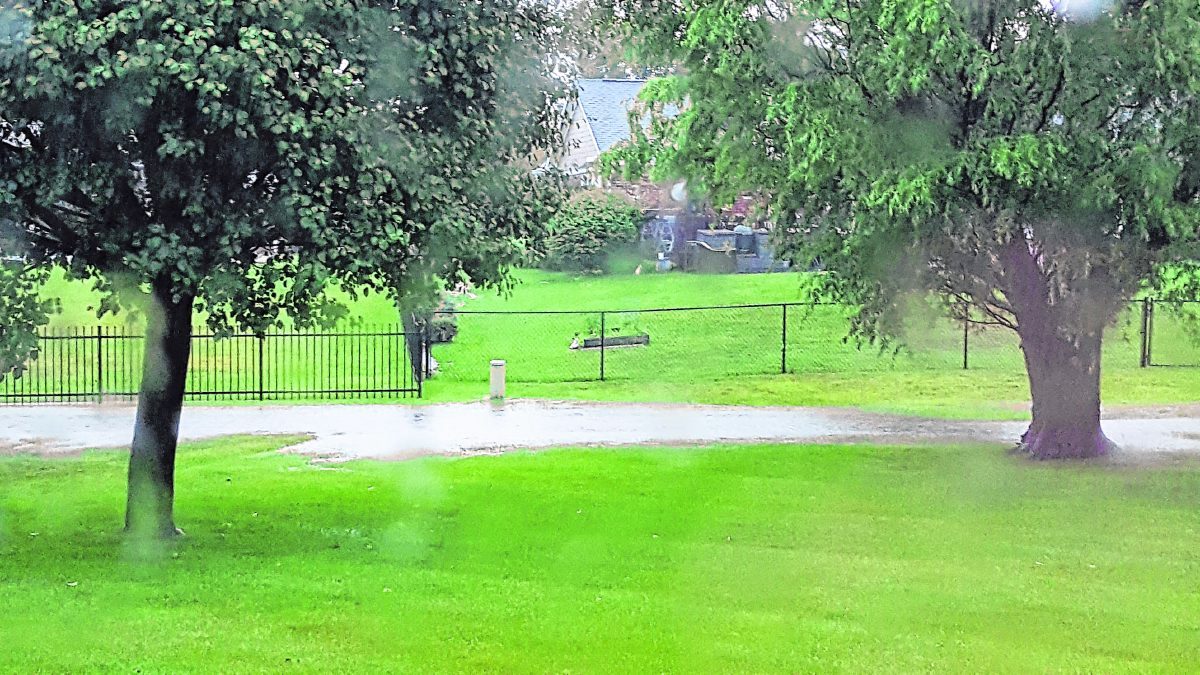Standing water and mosquitoes plague the Willow Lakes East subdivision in White River Township with every heavy rainstorm.
Residents of the subdivision and others in the county inspired County Commissioner Ron West to put forward legislation that would allow Indiana counties to step in and help subdivisions that have no other recourse for drainage control.
West worked with District 58 State Rep. Woody Burton, who represents parts of Johnson County, to pass House Enrolled Act 1155 in 2018. The law allows two pilot counties — Johnson County and Marion County — to help subdivisions by backing bank loans for drainage repairs with county tax dollars.
Since the bill was signed into law in July 2018, West has been working with interested homeowner’s associations to piece together projects.
[sc:text-divider text-divider-title=”Story continues below gallery” ]
The Willow Lakes East project is nearly ready to go, West said. The only remaining step is for the Johnson County Council to allocate a total of $332,000, with $292,000 needed for the project and $30,000 for any contingencies. The council signaled its approval at its August meeting, and will vote on the appropriation at its September meeting.
However, council members warned they would be cautious about backing any additional projects with tax dollars given the expected budget shortfalls from coronavirus-influenced tax collections, so they asked West to hold off on any additional projects during the pilot period, which ends June 30.
Per the process outlined in the law, the county will pay for the project with tax dollars from its general fund, which will be used to back up a 15-year bank loan from a local bank which will be taken out after funds are allocated.
The money will be paid back to the county as residents of the subdivision pay their portion of the project costs, which is at least $185 a year with interest per household, or $1,943 per household if they pay it all upfront, West said.
The county also has the ability under the law to add the annual payments to property tax bills, allowing the county to place a lien on the property for non-payment.
The money may be returned to the county sooner than 15 years if residents pay more than their yearly obligation or choose a lump sum amount to avoid interest, West said.
The Willow Lakes East project is long overdue, West and homeowners association (HOA) leaders said.
A creek that runs behind many homes in the subdivision has eroded significantly over the years, and overruns its banks during heavy rains, causing significant flooding on about 20 properties, and less severe flooding on about 20 more, said Richard Glover, HOA president. Flooding is so severe that a two-thirds majority of the 164 households agreed to the project, he said.
The flooding turns many yards turn into a swamp, with water standing for an extended period of time, drawing mosquitoes and preventing grass from being mowed, Glover said. At one home in the neighborhood, the excess water runs down a driveway and into the street, causing the street to flood as well, he said.
The subdivision has not always had drainage issues. The problem developed over time, as the drain installed when the subdivision was built decades ago began to fail, Glover said. The HOA has been looking for relief for about a decade, he said.
At one point 10 years ago the HOA had hired a contractor to repair the drainage system, but the individual backed out for other work, leaving residents in the lurch, said Carole Tanner, HOA treasurer.
Ever since the HOA has been looking for solutions without luck until the pilot program was authorized by the law, she said. The HOA ran into problems hiring a contractor because none of them wanted to work in multiple back yards and have to obtain permission from every household, Tanner explained.
This program allowed the HOA to be successful because the county handled the bidding process and homeowners have provided consent for the project, she said.
In addition to helping the homeowner’s association finance the drainage project, the county also handled the bidding process, and the Johnson County Commissioners selected the contractor. The contractor is ready to go, pending the council’s funding approval, West said.
Willow Lakes East is not alone with its drainage problems. Drains have begun to fail in other subdivisions, some more than 30 years old, in West’s northern Johnson County district and around the county.
Once the pilot project is completed, West plans to go back to the Indiana General Assembly with hopes to make the program permanent and suggest changes based on the county’s experience, he said.
West would hope to put more responsibility on homeowner’s associations. For example, the process could be better streamlined if the homeowner’s association selected its own contractor and applied for a bank loan on its own, he said.





